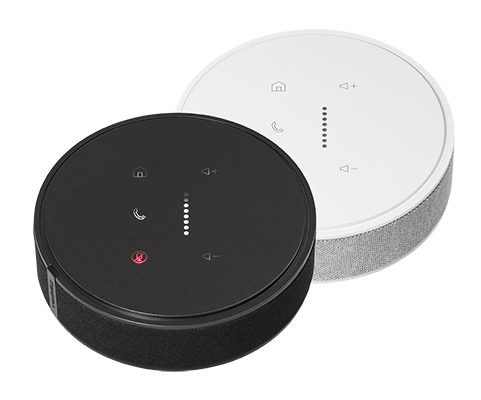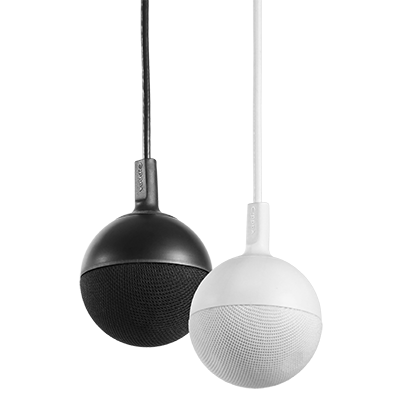Guide to Selecting a Ceiling or Tabletop Microphone
When setting up a conference room, it’s crucial to consider the audio equipment alongside the video equipment, display, and furniture. The quality of the microphone used to capture voice audio plays a significant role in ensuring productive meetings, as poor sound quality can be highly distracting. It’s important not only to capture voices clearly but also to minimize background noise, including ambient sounds and non-speaking participants.
When designing an audio system for a conference room, two types of microphones are commonly used: table mics and ceiling mics. The choice between them depends on various factors, such as ceiling height, room aesthetics, the presence of a control panel, and existing audio equipment standards in the building. To make the best selection, it’s essential to carefully consider all these factors.
Advantages and Disadvantages of Table Microphones
Table microphones offer significant advantages, especially when strategically placed to provide 360-degree coverage of the conference room. Ideally, three table mics placed on a table can easily achieve this coverage. For example, Vaddio’s TableMIC microphone has a built-in array of three discrete microphones that capture voices from all directions. When using a table mic, the voices of the speakers are amplified due to sound reflecting off the table’s surface. This reflection effect also occurs with PZM (pressure zone) microphones, particularly if a piece of plexiglass is included in the setup. Such microphones efficiently focus on the sound reflections, resulting in enhanced acoustic gain.

Another advantage of table mics is their convenient placement for control interfaces. Participants in the room can easily access mute buttons, volume controls, and level indicators to adjust the audio output as needed. This feature proves particularly useful in bring-your-own-device (BYOD) environments. When standard control-equipped table mics are installed across different meeting rooms in a building, the user experience remains consistent. Users can seamlessly move from one meeting space to another without a learning curve, simplifying the conferencing experience.
However, there are a few considerations when using table mics. With wired models, the cables may run across the table, which can be visually unappealing. Additionally, other equipment cables may contribute to table clutter. One significant drawback is the potential for ambient noise. Activities such as finger tapping, paper shuffling, mouse clicking, or keyboard typing near the mic can introduce unwanted ambient noise issues.
Pros and Cons of Ceiling Microphones
Ceiling mics are often preferred for their aesthetic appeal, as they offer streamlined and modern pendant designs that suspend from the ceiling. They are unobtrusive and complement the conference room decor. Unlike table mics, ceiling mics do not contribute to table clutter, and their positioning reduces the likelihood of picking up ambient noise from the table.
However, ceiling mics have certain limitations due to their placement. Sound at the table level differs from sound at the ceiling level. Sound can hang in the room before dissipating, causing voices to be less clear when picked up by ceiling mics. This issue is particularly evident in larger rooms with various surfaces that create echoes. To address this, Vaddio’s CeilingMIC overhead microphones feature integrated echo cancellation and digital signal processing (DSP) to deliver crisp and clear sound.

Another challenge with ceiling mics is the presence of other equipment on the ceiling, such as projectors with fans or HVAC systems. These devices generate noise that can be captured by nearby ceiling mics. Achieving wide coverage of the room requires overlapping the collection patterns of ceiling mics, which can exacerbate noise problems like HVAC or radiated noise from neighboring rooms. Although there are ways to mitigate these issues, it’s essential to consider them when evaluating the suitability of table mics or ceiling mics. Regarding volume and mute functions, ceiling mics can be linked to a control panel that allows adjustments through serial or IP connections.
When selecting between table mics and ceiling mics for a conference room, it’s crucial to consider factors like room aesthetics, ceiling height, control interface accessibility, existing audio equipment standards, and potential ambient noise. By carefully weighing the advantages and disadvantages of each option, you can choose the microphone form factor that best meets your specific requirements.









